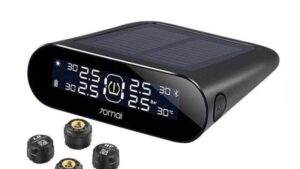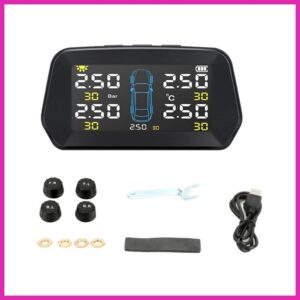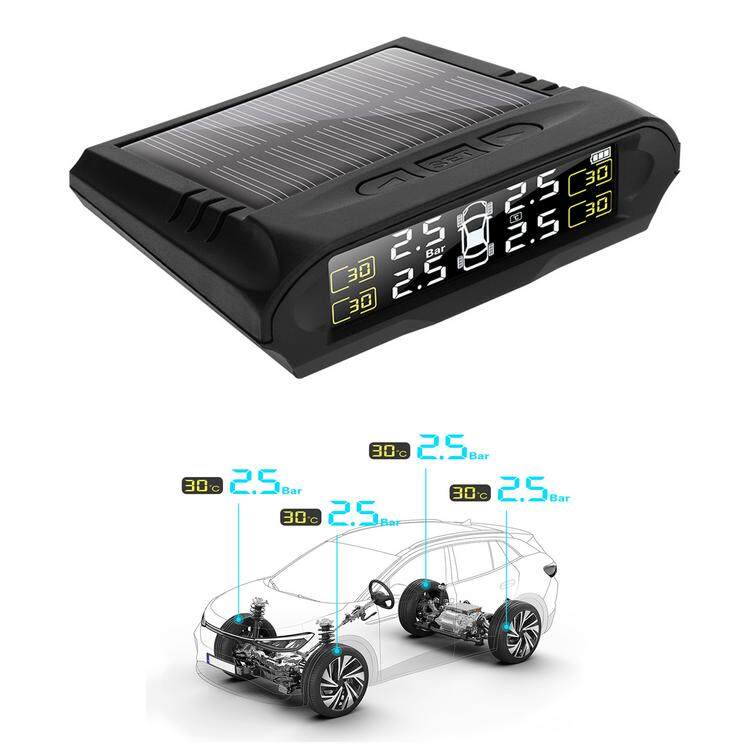Blog
The Science Behind TPMS: Pressure, Temperature, and Safety
The Science Behind TPMS: Pressure, Temperature, and Safety
Tire Pressure Monitoring Systems (TPMS) have become a vital safety feature in modern vehicles, helping drivers stay informed about the condition of their tires and prevent accidents caused by underinflated or overinflated tires. While most drivers understand the basic concept of TPMS, few are familiar with the scientific principles that make these systems so effective. In this article, we will explore the science behind TPMS, focusing on the relationship between tire pressure, temperature, and safety, and how this knowledge can enhance your driving experience.
1. The Importance of Tire Pressure
Tire pressure is a critical factor in vehicle safety and performance. The proper tire pressure ensures that the tire is properly inflated to support the weight of the vehicle while maintaining adequate contact with the road. Underinflated or overinflated tires can have serious consequences, including poor handling, increased tire wear, and reduced fuel efficiency.
How Pressure Affects Tire Performance:
- Underinflated Tires: When a tire is underinflated, the surface area in contact with the road increases, which can lead to excessive heat buildup and uneven wear. This not only reduces the lifespan of the tire but also increases the likelihood of a tire blowout.
- Overinflated Tires: Overinflation causes the tire to become too stiff, reducing the contact area with the road. This leads to poor traction, especially in wet or slippery conditions, and increases the risk of a blowout. Overinflated tires also have a harsher ride, as they are less able to absorb bumps and irregularities on the road.
The Role of TPMS in Monitoring Pressure:
TPMS sensors are designed to continuously monitor the air pressure inside each tire and alert the driver if pressure drops below or exceeds safe levels. These sensors typically measure tire pressure in real-time, ensuring that drivers are informed as soon as there is a deviation from optimal levels.
2. The Connection Between Tire Temperature and Pressure
Tire pressure and temperature are closely related, and understanding this connection is crucial for maintaining optimal tire health and safety. The temperature of a tire affects its pressure, and changes in pressure can, in turn, affect the tire’s temperature.
The Science of Tire Pressure and Temperature:
- Thermal Expansion: As tires heat up, the air inside them expands, increasing the tire pressure. This is why tire pressure tends to rise when driving for long periods, especially at high speeds or in hot weather. Conversely, when the tire cools down, the pressure drops. This is known as the ideal gas law, which states that the pressure of a gas is directly proportional to its temperature (P = kT).
- Temperature Variations: Tires naturally heat up during use, especially under heavy loads or at high speeds. If the tire is underinflated, this increased temperature can lead to higher rolling resistance, which causes even more heat buildup. Over time, this cycle can cause the tire to degrade rapidly. Conversely, if a tire is overinflated, it may have reduced surface contact with the road, leading to uneven heating and excessive wear in certain areas of the tire.
Why Temperature Matters in TPMS:
Most modern TPMS systems are equipped to monitor both tire pressure and temperature. By keeping track of both variables, these systems can alert the driver to any abnormal changes, helping prevent dangerous situations such as tire blowouts caused by excessive heat.

3. How TPMS Enhances Safety
The primary purpose of TPMS is to improve safety by helping drivers maintain the correct tire pressure and prevent accidents related to tire failure. The science behind TPMS involves a combination of pressure monitoring, temperature sensing, and real-time data transmission, all of which play a key role in ensuring the vehicle is operating safely.
Preventing Tire Blowouts and Accidents:
Tire blowouts are one of the most dangerous tire-related accidents, often occurring unexpectedly and at high speeds. A TPMS system helps prevent blowouts by detecting significant pressure loss before it leads to catastrophic failure. When a tire loses too much air, its structural integrity becomes compromised, making it more prone to sudden rupture. A TPMS can catch this early, allowing the driver to pull over safely and address the issue before it becomes life-threatening.
Improving Handling and Performance:
Proper tire pressure enhances vehicle handling by ensuring that all four tires have an equal contact patch with the road. When the tires are properly inflated, they can maintain consistent traction, which improves the vehicle’s ability to steer, brake, and accelerate. Underinflated or overinflated tires, on the other hand, can cause the vehicle to handle poorly, especially during sudden maneuvers or in wet or icy conditions.
Boosting Fuel Efficiency:
Proper tire pressure directly impacts fuel efficiency. Underinflated tires increase rolling resistance, forcing the engine to work harder and consume more fuel. By maintaining optimal pressure, a TPMS helps improve fuel economy, reducing the vehicle’s carbon footprint and saving money on fuel costs. Studies show that properly inflated tires can increase fuel efficiency by up to 3%.

4. The Technology Behind TPMS
Modern TPMS systems use advanced technology to monitor tire conditions and provide real-time alerts to drivers. These systems can be broadly categorized into two types: direct TPMS and indirect TPMS.
Direct TPMS:
Direct TPMS systems use sensors mounted inside each tire to measure the actual air pressure. These sensors transmit data wirelessly to a receiver inside the vehicle, typically the car’s central dashboard or infotainment system. Direct TPMS systems are more accurate and reliable, as they provide real-time pressure readings and can also monitor temperature.
Indirect TPMS:
Indirect TPMS systems do not measure tire pressure directly. Instead, they estimate tire pressure by monitoring the wheel speed using the vehicle’s anti-lock braking system (ABS). When a tire is underinflated, its rolling circumference changes, which is detected by the system. While indirect systems are more affordable, they are less accurate and cannot monitor tire temperature.
5. Best Practices for Maintaining TPMS Performance
To get the most out of your TPMS, it’s essential to follow a few best practices:
- Regular Tire Inspections: Even with a TPMS, it’s important to visually inspect your tires for signs of damage, such as bulges, cuts, or punctures. TPMS cannot always detect these issues.
- Calibrate the System: After changing tires, rotating them, or replacing the sensor battery, make sure to calibrate your TPMS system to ensure accurate readings.
- Check Tire Pressure Regularly: While TPMS provides continuous monitoring, it’s still a good idea to manually check tire pressure once a month using a tire gauge to confirm the accuracy of your system.
Conclusion: The Science of TPMS for Safety and Performance
Tire Pressure Monitoring Systems (TPMS) are more than just a convenience; they are a vital safety feature that directly impacts a vehicle’s performance, safety, and efficiency. By understanding the science behind tire pressure, temperature, and how they affect tire health, drivers can better appreciate the importance of TPMS in maintaining optimal tire conditions.
With the ability to monitor both tire pressure and temperature in real time, TPMS systems offer drivers a reliable safety net, helping to prevent blowouts, improve fuel efficiency, enhance vehicle handling, and prolong the life of tires. Whether you’re driving on long highway trips or through city streets, a well-maintained TPMS system is one of the simplest and most effective ways to ensure your vehicle operates safely and efficiently.


